
Today, there’s a growing interest in interior design leaning more towards simplicity and functionality. Despite this, there’s always room for various decorative elements capable of highlighting the style, adding variety to a monotonous setting, and creating a homely comfort. One such element is the patchwork tile, used for decorating wall and floor surfaces, creating superb accent compositions, and infusing the interior with a touch of “provincial” charm.
What is patchwork tile, its features
Before we discuss ideas for decorating rooms with tiles, let’s understand what patchwork is. Translated from English, “patchwork” means the art of sewing from fabric scraps. Indeed, the design of finishes with similar patterns looks like a colorful patchwork quilt, fitting perfectly into most stylish modern interiors. While previously patterns had a rich color, now there is a strong interest in unobtrusive drawings, sometimes even with an aging effect.
People use patchwork tile in decorating bathrooms, kitchens, corridors, and living rooms. You can also find it on balconies and spacious terraces (large patios). The originality of the patterns and the richness of the color palette fill the home interior with warmth and comfort.
The special feature of this finishing material is that it offers a multitude of opportunities for creating original designs. You can lay the tile in a pattern or in a chaotic sequence, from which the overall appearance of the interior significantly benefits.
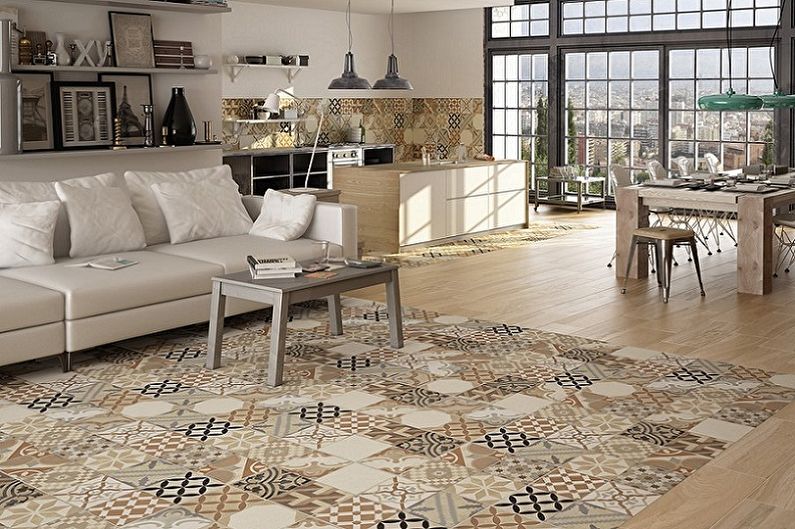

What to consider when choosing patchwork tile
Today, the market presents patchwork tile in various interpretations. Its varieties differ in size, ornaments, manufacturing materials, and other features to consider when choosing, so we’ll dwell on this in more detail.
Sizes
Modern manufacturers offer tiles of different sizes, with larger canvases depicting the layout of smaller ones. It’s much easier to work with larger tiles, but people use them only if they decorate expansive spaces, like an entire floor or wall. Small tile sizes allow for an easy “fit” of the pattern even into the most modest space. When choosing a material, pay attention to the fact that all tiles should have the same thickness and identical surface treatment.
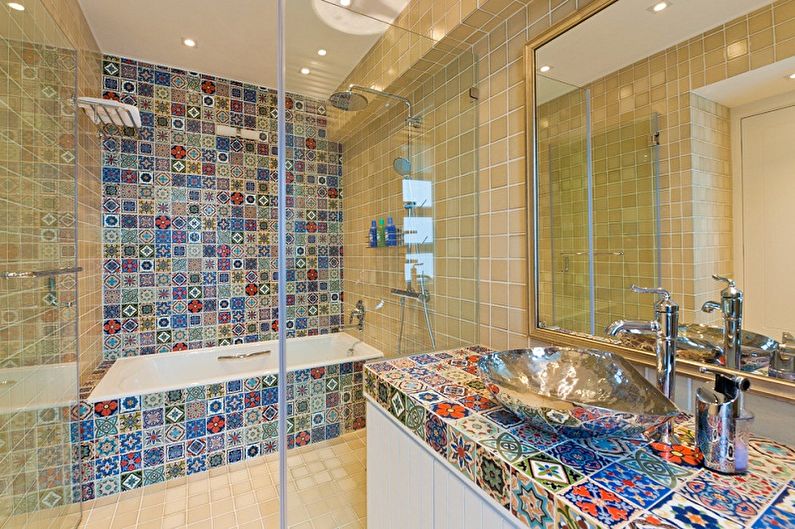
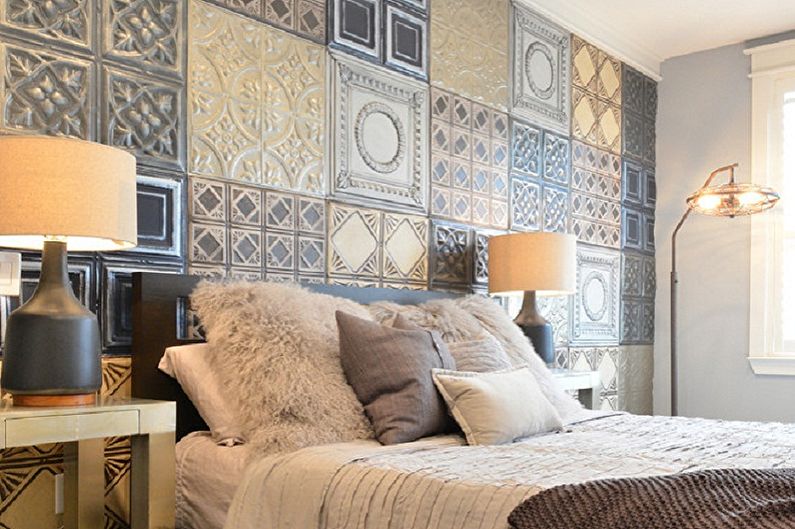
Materials and Patterns
When choosing tile, you need to consider its intended area of application – it could be meant for wall or floor tiling, which is always indicated on the packaging. Patchwork tile comes in two varieties: ceramic and, the more durable, porcelain. The surface texture can be smooth or rough, have a reflective shine or matte finish. Which one to choose depends on the personal preferences of the homeowners, as well as the interior design (rural styles typically feature matte surfaces, sometimes with elements of aging, while contemporary high-tech trends lean towards gloss and glaze).
Various colored designs are applied to the tile surface using digital printing. Today, the most popular are black and white, blue and white, and beige patterns. They can take the form of abstractions, graffiti, geometric shapes, ornaments. Tile manufacturers respect new fashion trends and reflect this in their products. If the upcoming year’s trend turns out to be plaid fabric – a new collection of similar patchwork tile will surely emerge. However, you shouldn’t rush to chase the fashion – patterned finishing should harmonize with the overall interior atmosphere, its style, and color palette. Brightly colored tile should be used sparingly, as over time, saturation with bright colors can cause irritability.
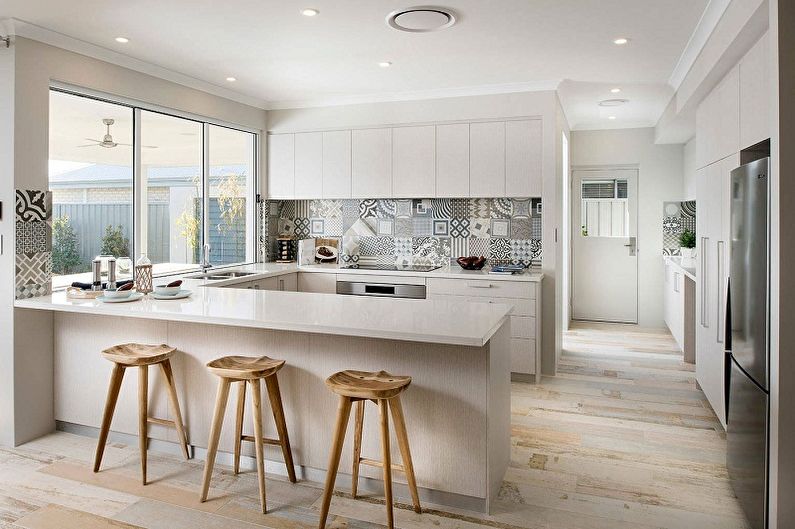
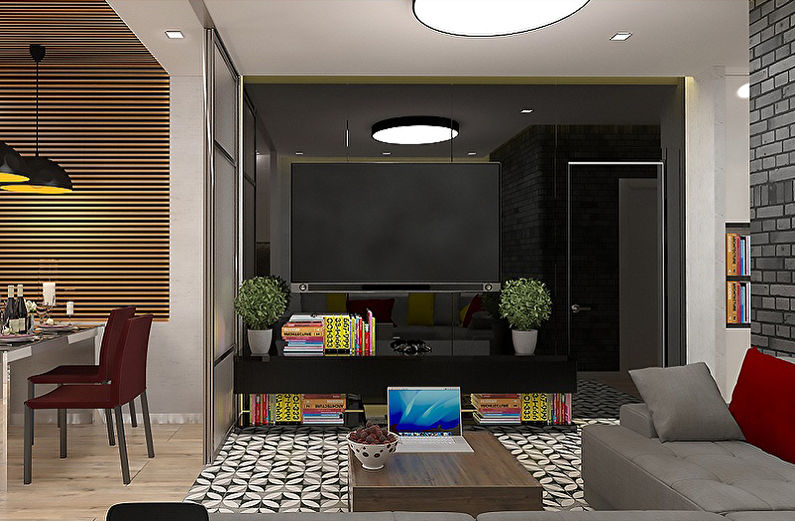
Style
Contrary to popular belief that patchwork tile is only suitable for rural decorations, it’s worth noting that with the right approach to selecting a pattern and color palette, it can become a worthy decoration for any interior, from concise minimalism to elegant modern.
The trendy minimalist direction in residential design implies strict linear decoration, where everything should be in its place – light finishing, only functional furniture, and no excesses. Despite this, you sometimes need to incorporate patchwork tile into the interior, significantly enlivening it. In addition to neutral gray and white tones, more saturated beige or blue patterns, which create a pleasant contrast to the eye, will look superb here.
In a country-style interior, patchwork patterns look most successful, highlighting its uniqueness. In combination with rough wall finishes and solid wooden furniture, it looks much more impressive, revealing its aesthetic virtues and filling the environment with extraordinary warmth.
The somewhat austere Scandinavian style, loved by many, is characterized by bright, almost unpretentious decorations. This approach to design decoration is due to the northern people’s desire to make their homes as bright and comfortable as possible. Coziness is an important component of the Scandinavian interior, so minimalist decor plays an important role here, especially seen in handcrafted items. Alongside original rugs and curtains in ethnic motifs, patchwork tile decorating the floors and walls will harmoniously fit. Usually, they choose ‘calm’ shade tiles with a matte surface, highlighting the naturalness of the material.
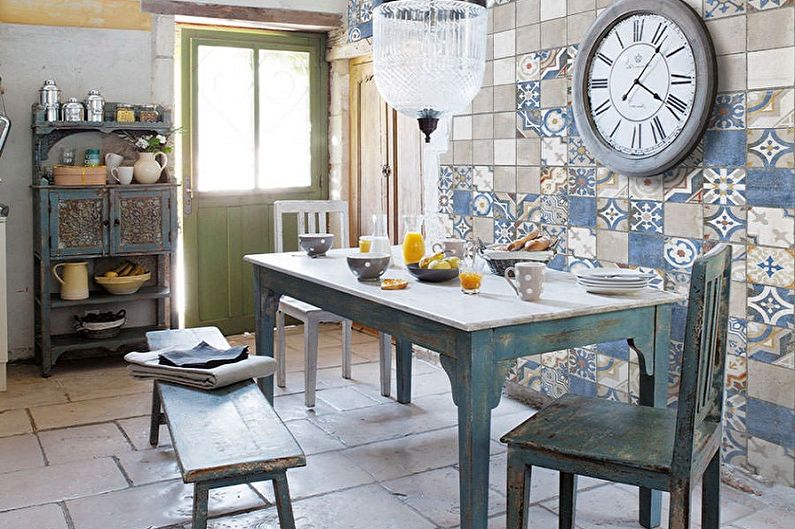
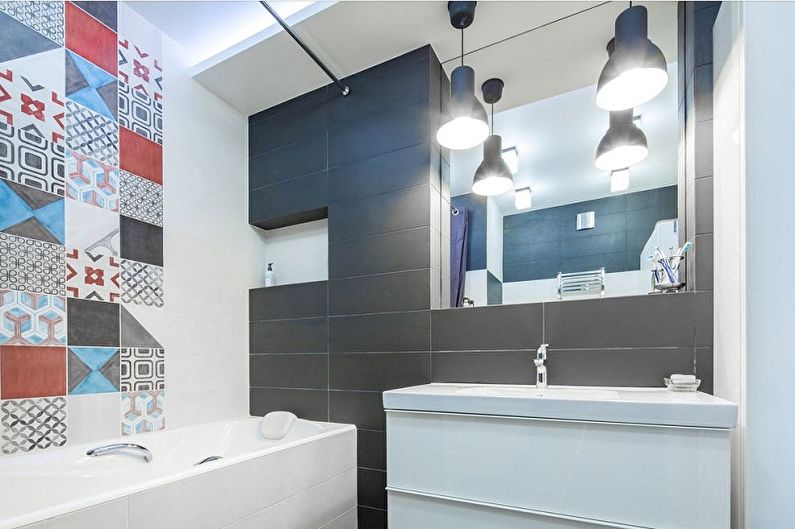
Beautiful Ideas for Different Rooms
Patchwork tile can beautify any residential interior. Most often, it serves as an accent element of the interior: it is used to create decorative inserts, highlight necessary zones, lay out superb panels, individual walls or floor surfaces. It is essential to consider that an oversaturation of patterns can create an irritating impression, especially in small spaces.
Patchwork Tile in the Living Room Interior
The decoration of the living room interior requires special attention – here, you need to create the most comfortable and, at the same time, beautiful setting not only for the family members but also for the family’s guests. Patchwork tile, assembled from different patterns, can turn into a charming wall panel, reminiscent of a kaleidoscope. A patterned floor will look fantastic, replacing a colorful carpet in the living room. With the help of tiles, you can successfully zone the kitchen-living room space, designating, for example, the leisure area.
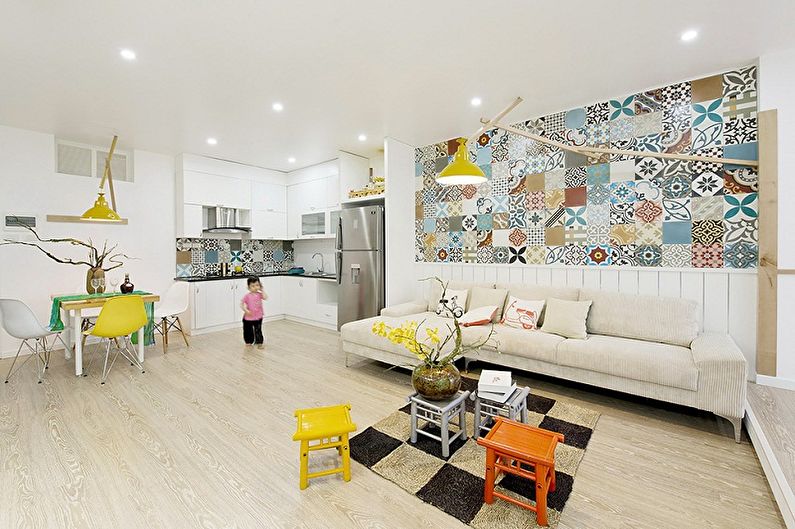
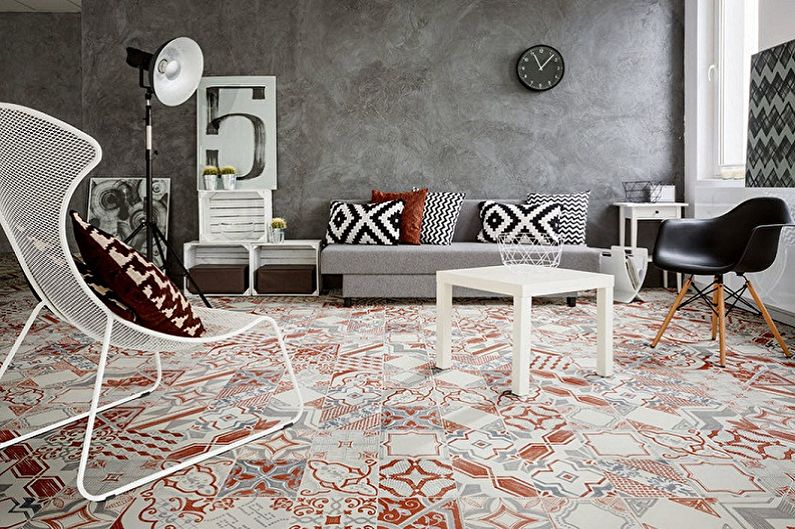

Patchwork Tile in the Kitchen Interior
In the kitchen, patchwork tile will be an excellent assistant in creating decorations – often this room is deprived of a large area, which doesn’t allow for more global interior decorations. You can mark the dining area or apron with a patchwork rug. In this case, you need to choose a monolithic set with no prints, colorful inserts, or other adornments that would distract from the main decor. A solid surface cladding combined with tile ornaments will look best.
Textiles executed in patchwork motifs will well complement the environment. For this room, you can choose tiles not with a relief, but a smooth surface, which will significantly simplify cleaning.
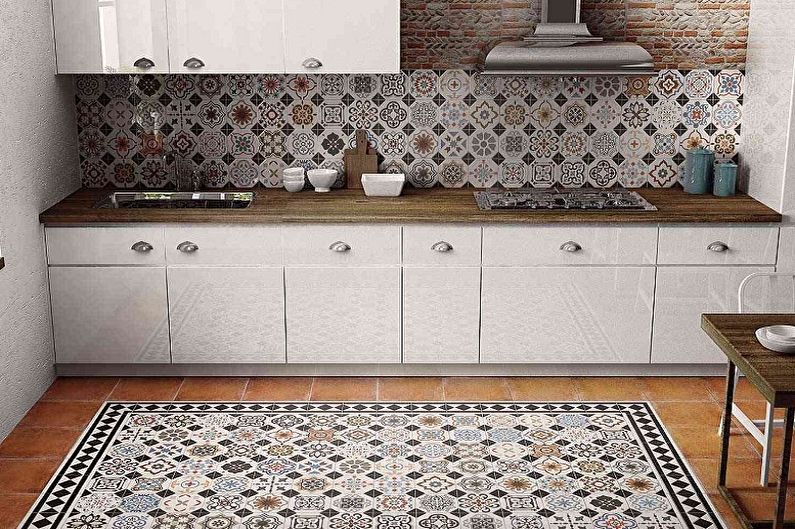
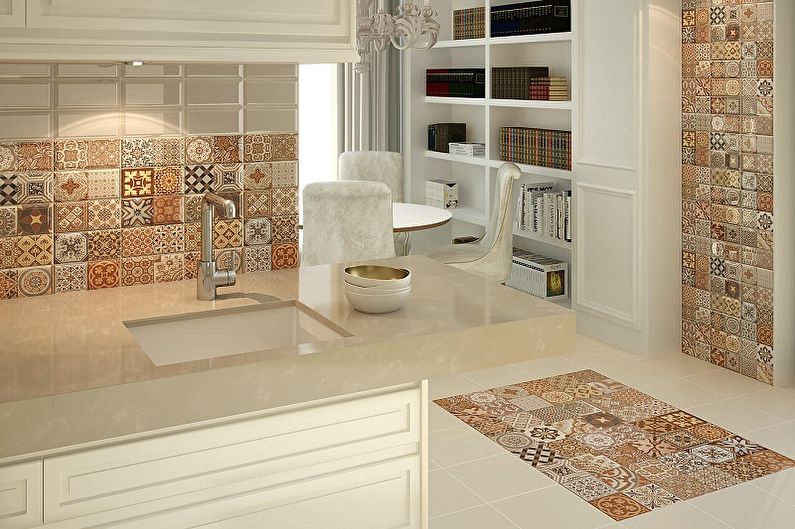
Patchwork Tiles in the Bathroom Interior
If you’re not a lucky owner of a spacious apartment or a private house, you’ll inevitably face the challenge of finishing a tiny bathroom. The choice often falls on a design with wall finishing in light shades, which is absolutely justified, as such a palette makes the space feel more roomy and airy. Using patchwork-style tiles can transform even the smallest room into a true masterpiece.
It’s best to choose smaller tile sizes, not exceeding 8×8 inches (20×20 cm), so the decor won’t overload the room, and large patterns should be left for spacious bathrooms. To design a patterned floor rug, professionals recommend choosing matte tiles, the surface of which does not cause significant slipping.
You can create interesting accents by using tiles sporadically to highlight one area or another. Such finishing will look excellent on one of the shower walls, as a lining for the bathtub or sink. To visually enlarge the space, you can lay out the tiles in the form of horizontal and vertical lines.
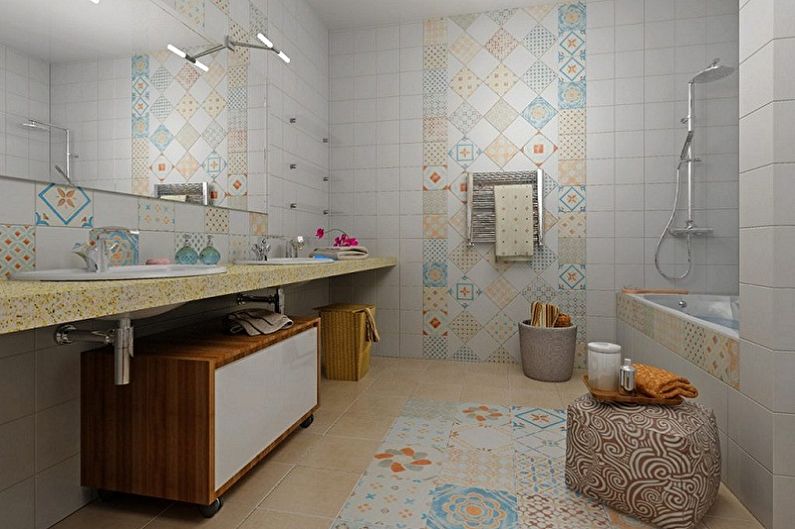
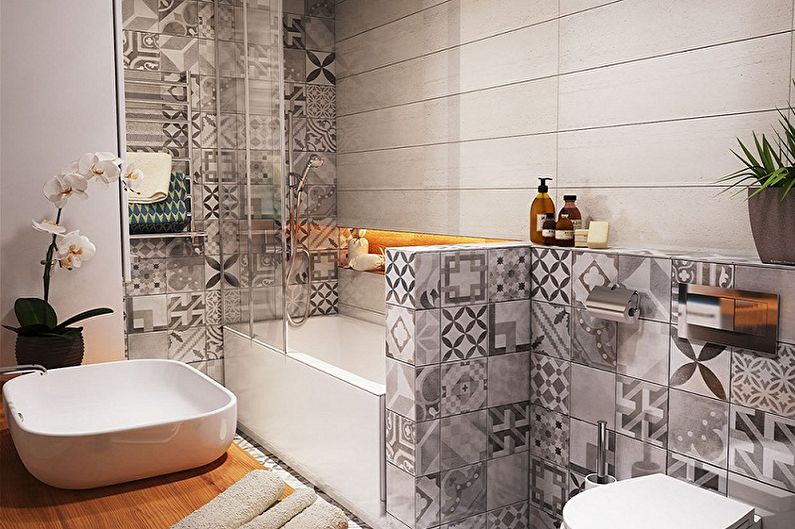
Patchwork Tiles in the Entrance Hall Interior
In the entrance hall, patchwork tiles appear as floor covering, notable for its resistance to mechanical damage and various kinds of loads. Besides, you can use it to make a bright accent on the floor or adjust the space. For small rooms, it’s better to select tiles with light patterns that resonate with the main wall finishing palette – then the room will seem visually wider and more spacious. In private homes, where a staircase to the second floor extends from the entrance hall, its steps can also be designed in patchwork style, continuing the carpet pattern on the floor.

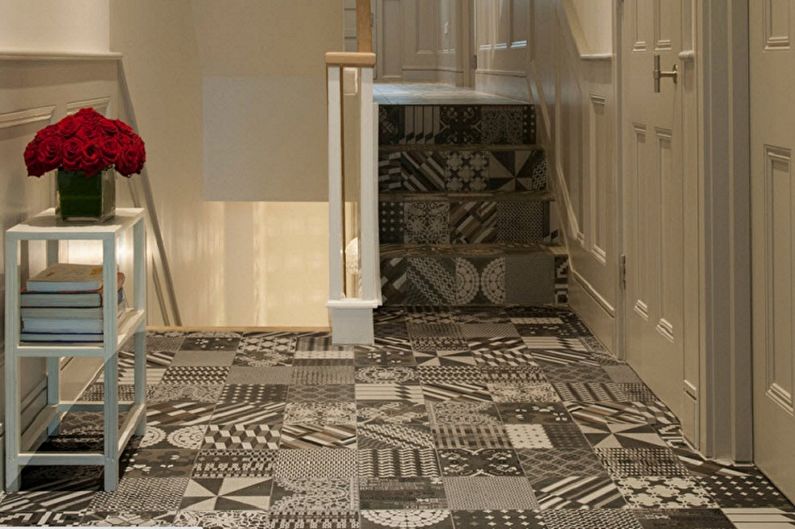
Patchwork Tiles – Photos
You can see how interesting and beautiful patchwork tiles look in various interiors in the following gallery. Here you’ll find the best photos highlighting all the advantages of this design, sure to inspire you to create your own. Enjoy the view!
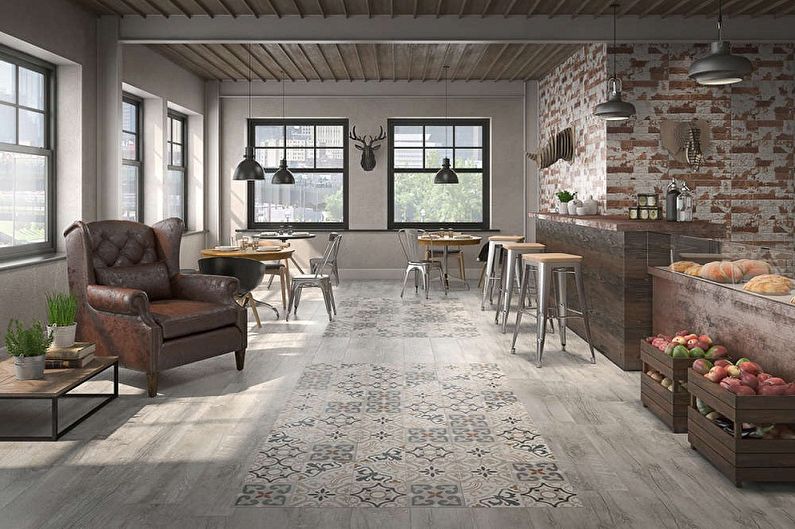

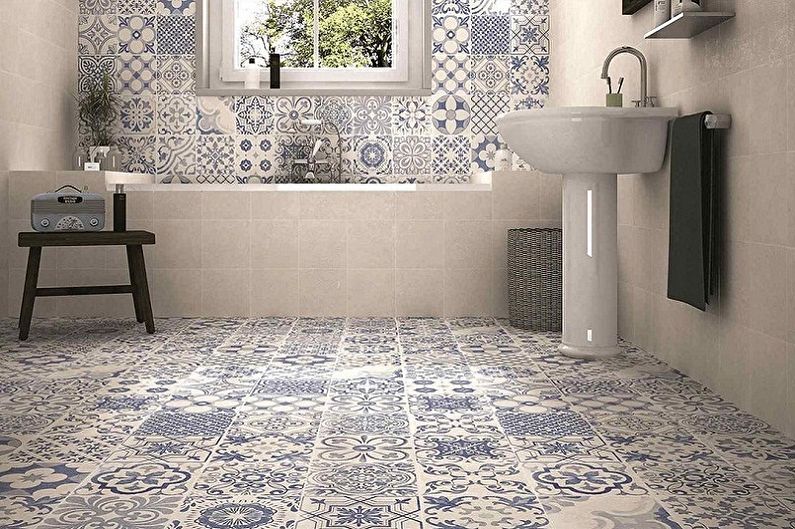
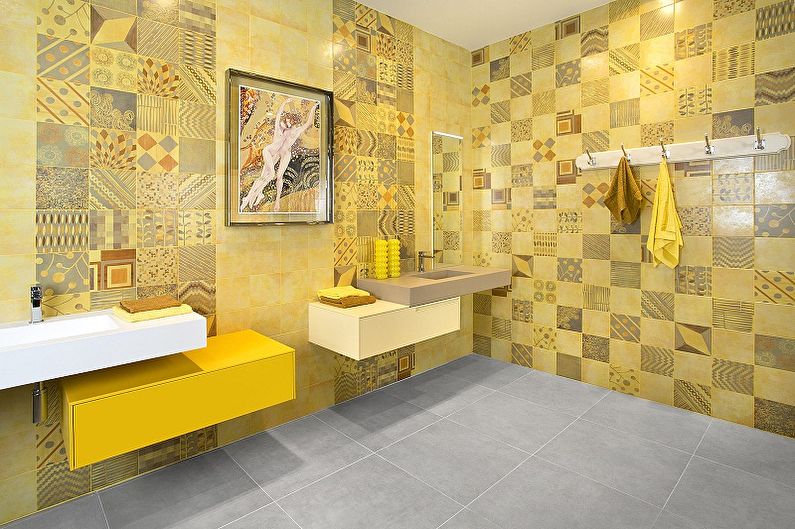
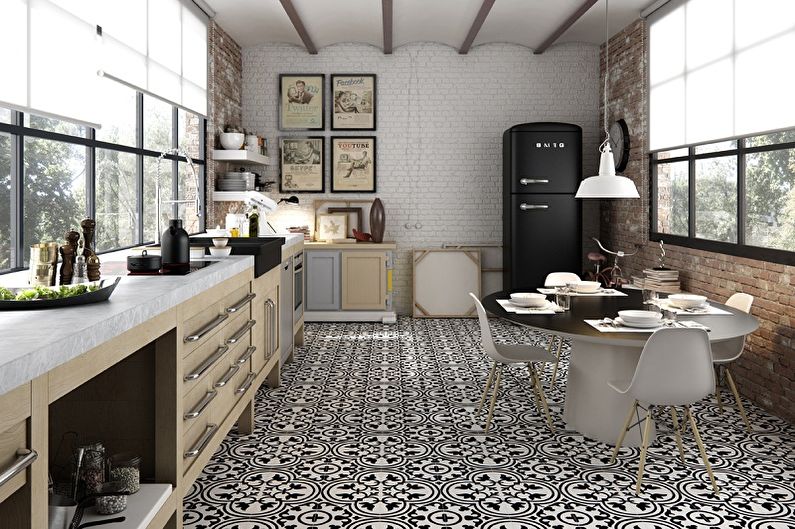
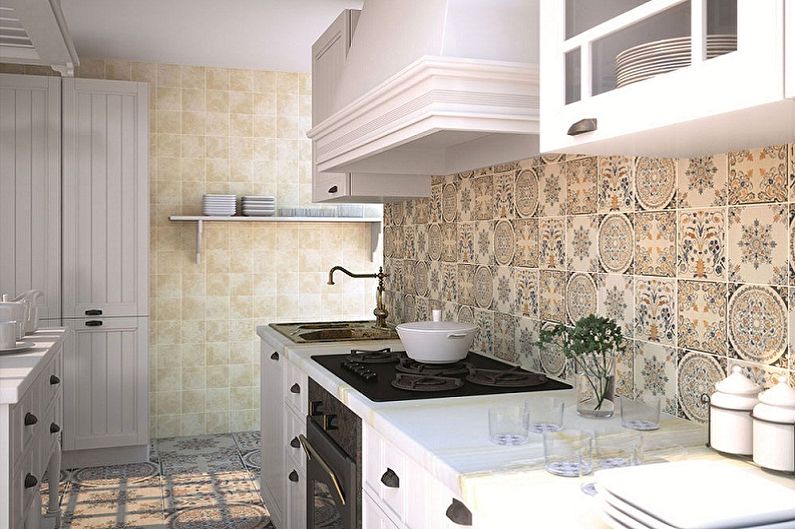
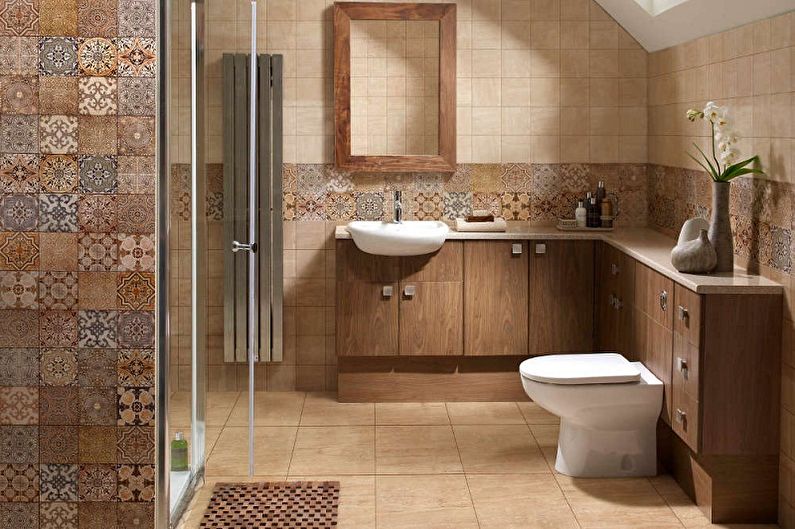
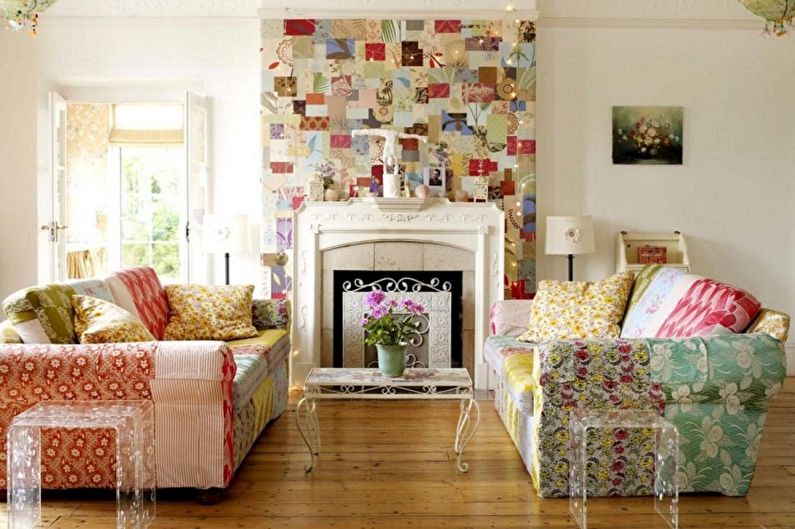
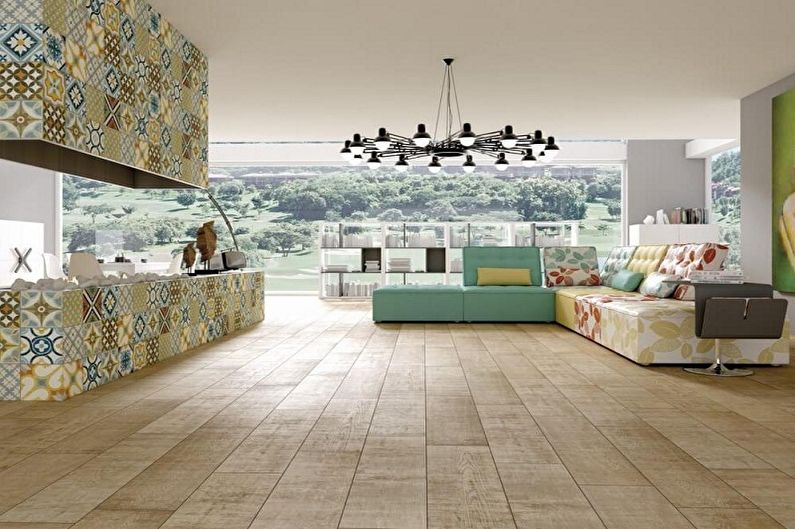
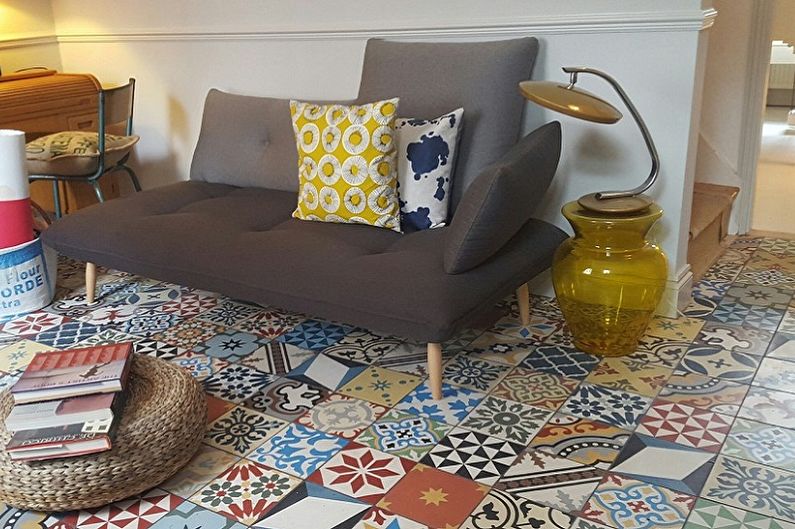

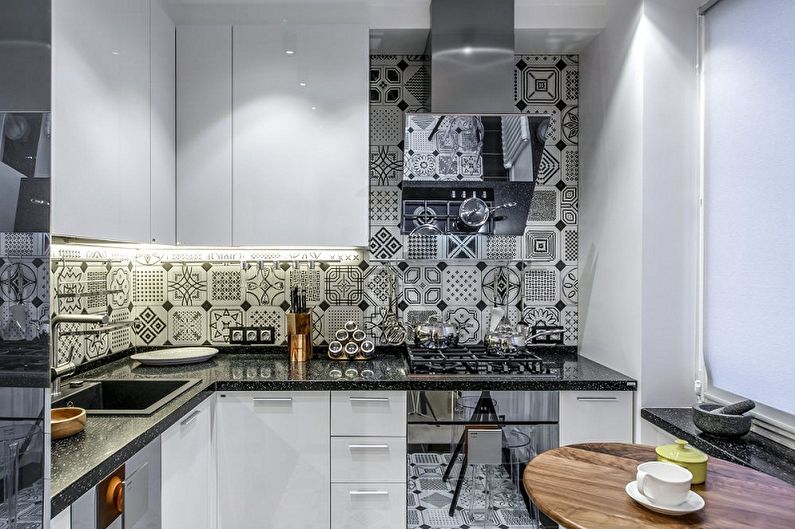
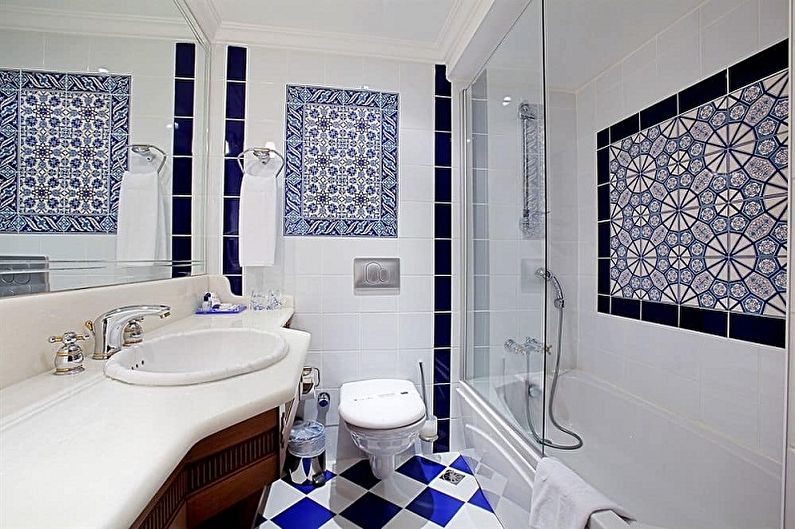
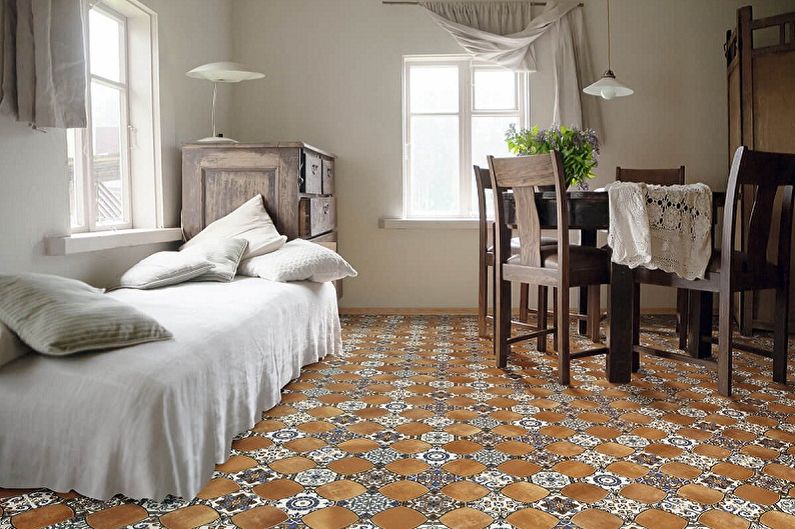

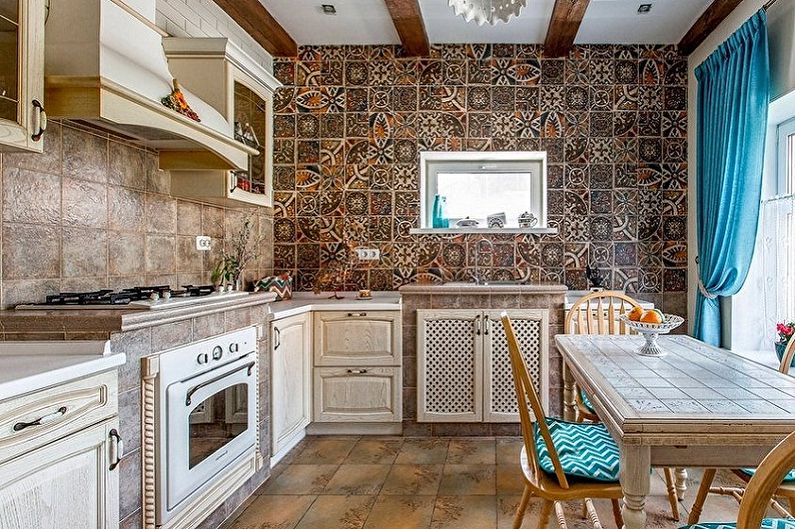

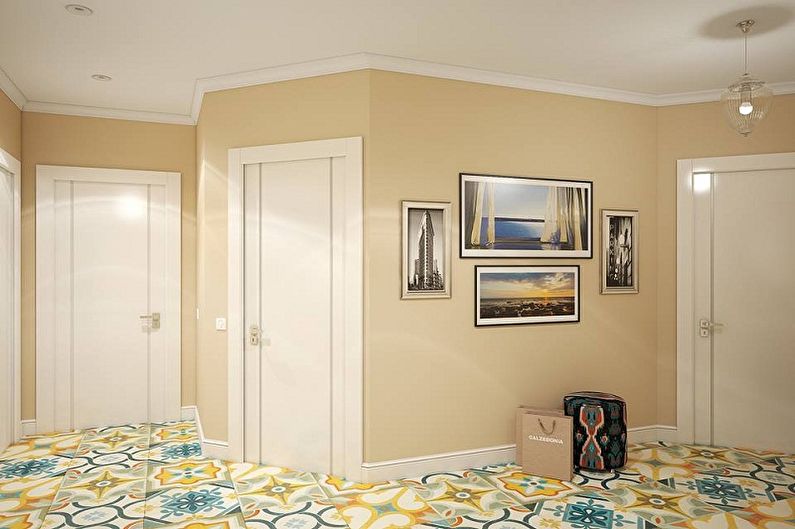
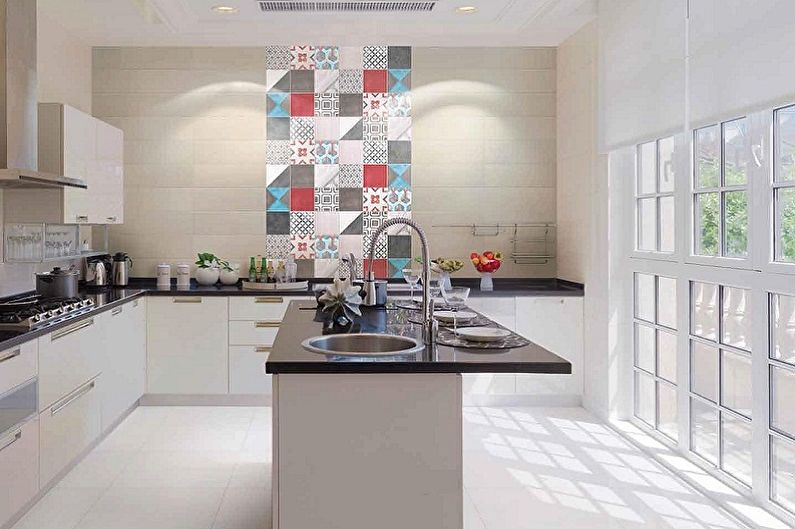
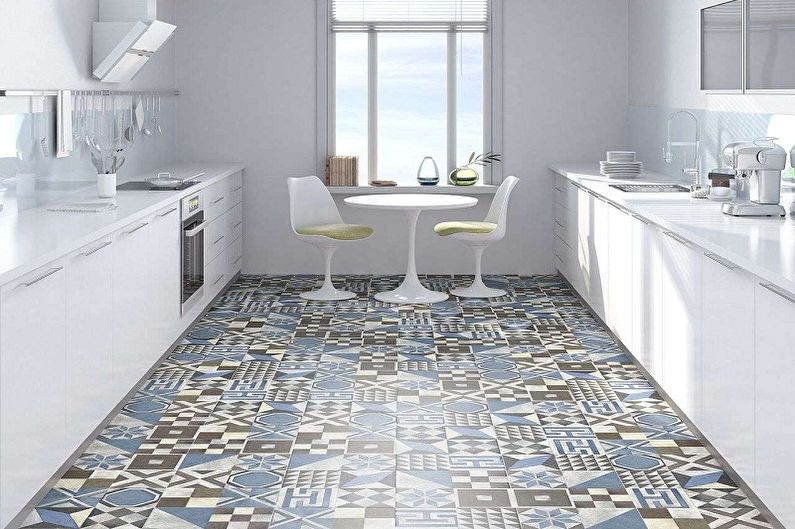
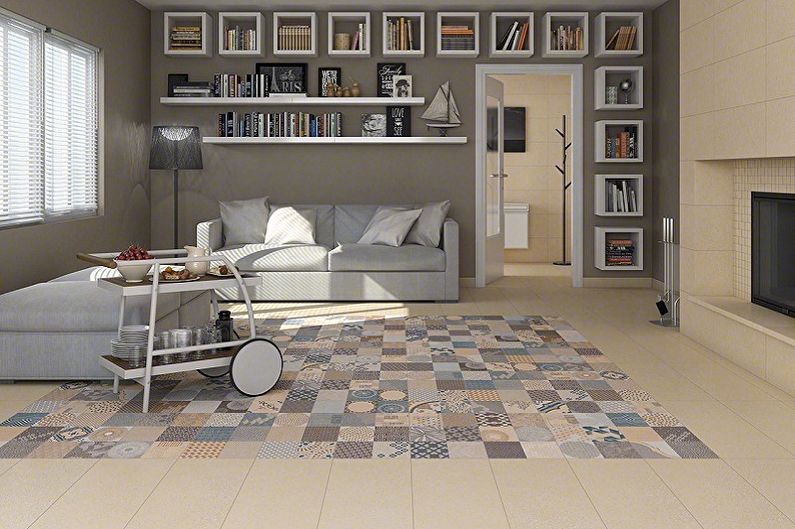
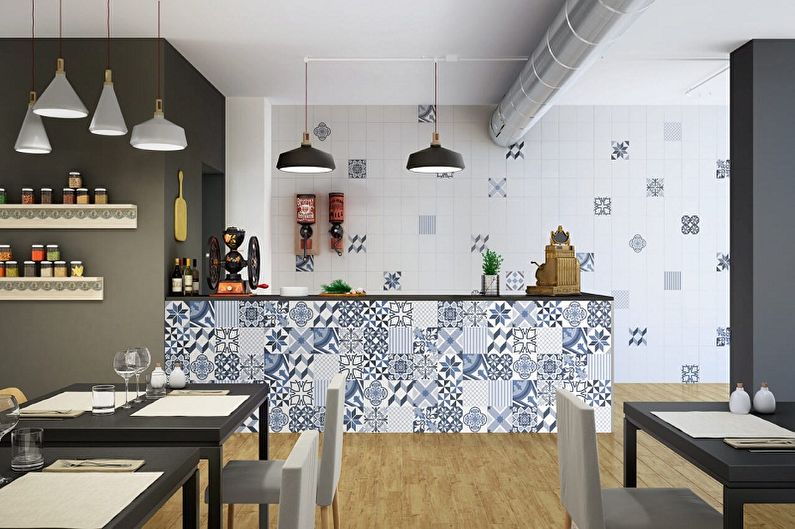
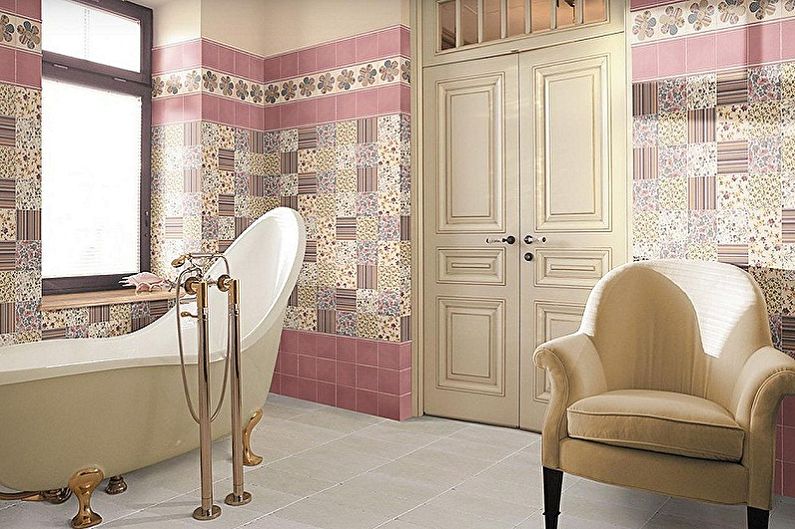
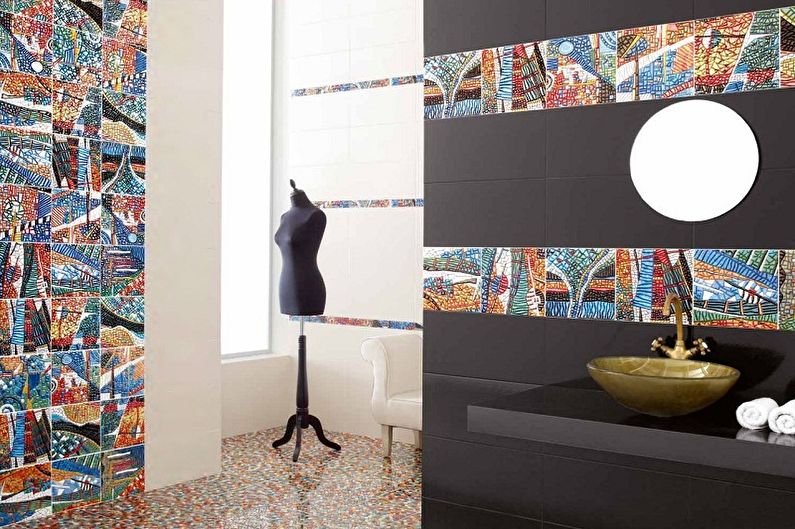

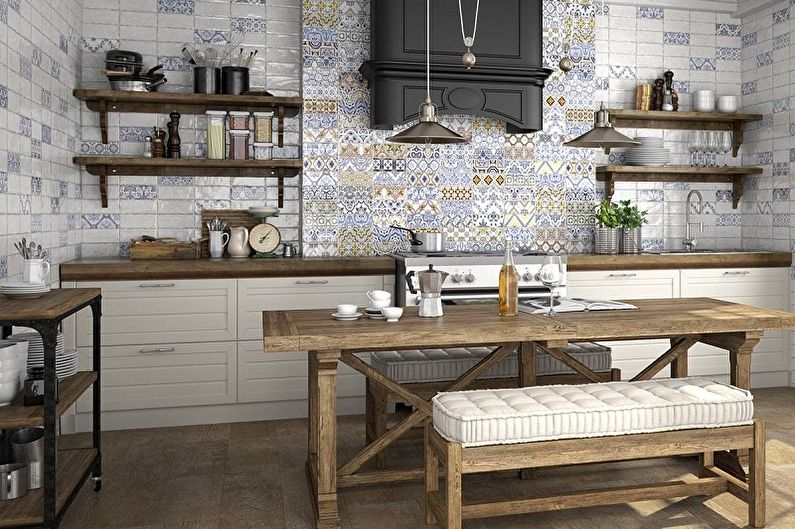
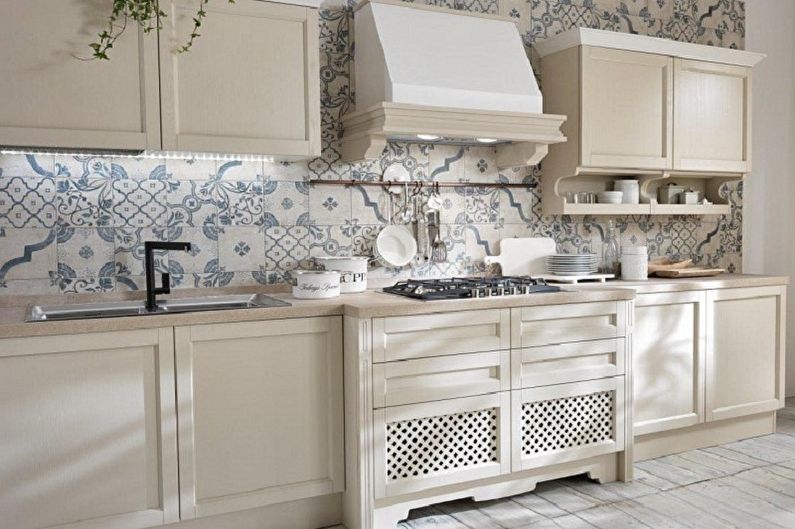
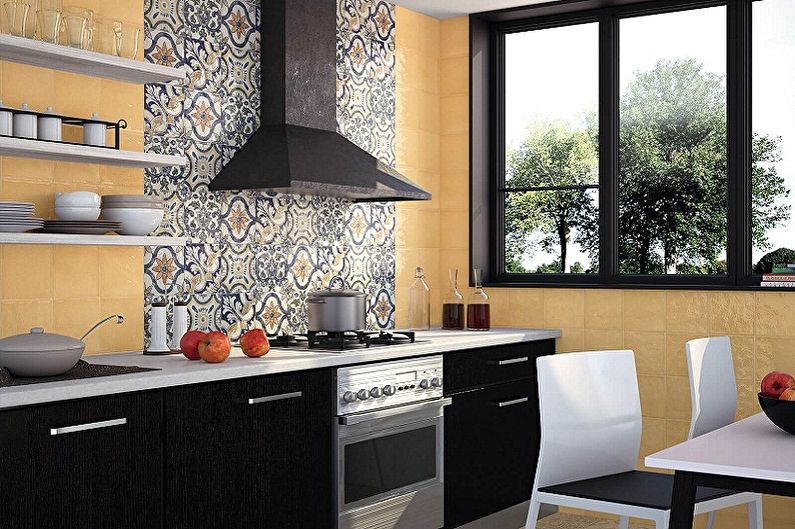
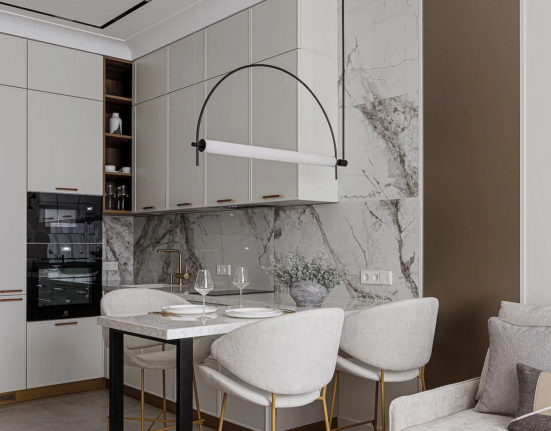
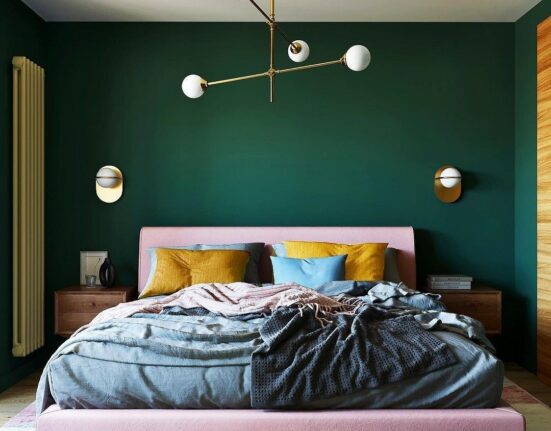
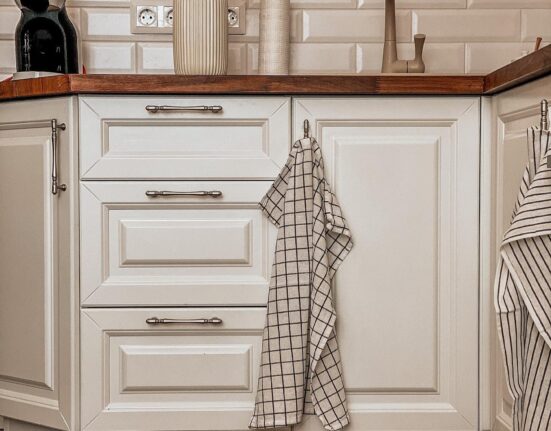
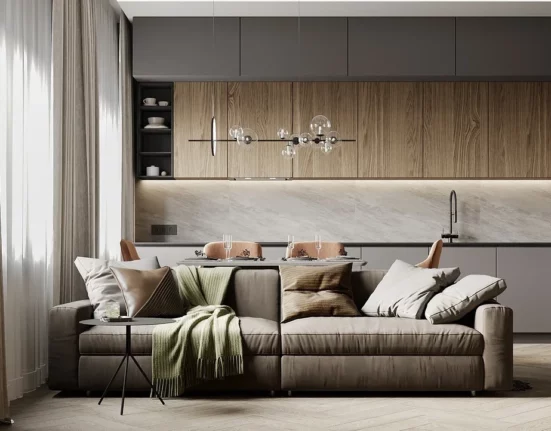
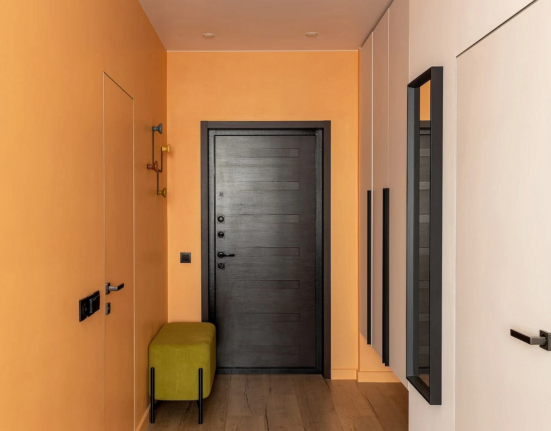

Leave feedback about this